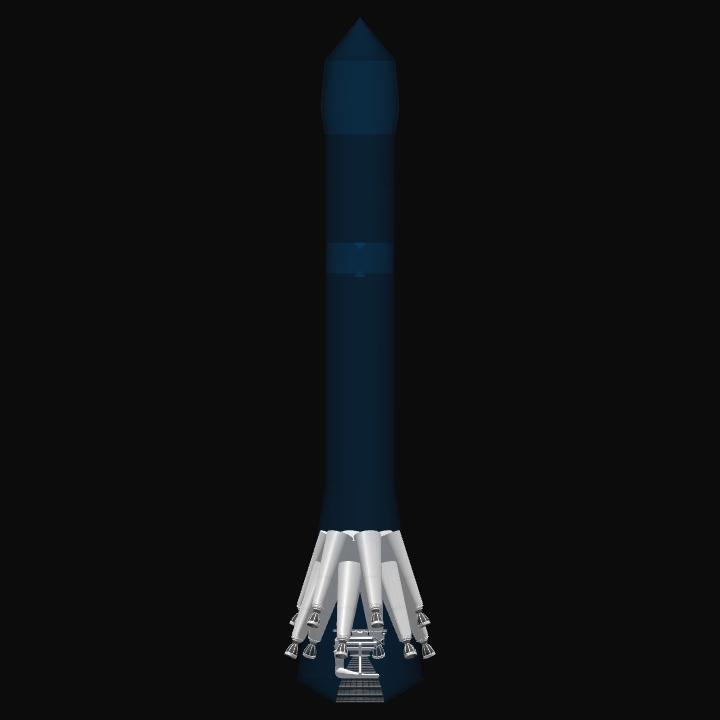This rocket was an experiment after the 2017 competition ended. Our goal was to demonstrate the schools engineering department. Her design originated in SolidWorks, which is why im unable to share screencaps of it, tho i do have an engineering journal i plan on sharing eventually.
Anyways, her goal, as i said, was to demonstrate the engineering department. She was to combine robotics and 3D design/Printing in order to fly. She had 2 engines, one at the bottom of the craft in a typical position, and one almost directly above the bottom engine, with its exhaust directed into 7 tubes (Version 1) and 12 tubes (Version 3 which is the one displayed here)
She was to have a motherboard programmed to keep her nose as straight as possible using a robotically controlled slat at the bottom of each tube. It would control the slats, blocking the flow of exhaust and projecting into the airflow.
Sadly, the only things completed on her were the Nose Cone and Engine base, No robotic parts were fully finished, as the school year had ended and this project actually started to sky rocket in terms of costs and materials.
Now, because i cant redirect exhaust from a single engine into multiple outlets, im using pixie engines to simulate what we had in mind.
The scale is 1cm to 1 meter
Ingame she flies, but my focus is just on recreating my teams crafts rather than being able to obtain a proper orbiter.
After all, Model rockets arent supposed to obtain Orbit!
GENERAL INFO
- Predecessor: Team America Rocketry Challenge 2017
- Created On: Windows
- Game Version: 0.6.9.2
- Price: $6,669k
- Number of Parts: 38
- Dimensions: 43 m x 9 m x 9 m
PERFORMANCE
- Total Delta V: 5.7km/s
- Total Thrust: 5.5MN
- Engines: 13
- Wet Mass: 3.18E+5kg
- Dry Mass: 23,848kg
STAGES
| Stage | Engines | Delta V | Thrust | Burn | Mass |
|---|---|---|---|---|---|
| 1 | 13 | 5.7km/s | 5.5MN | 2.1m | 3.18E+5kg |





